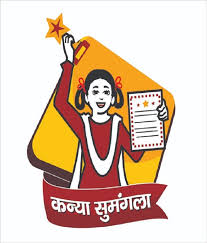Being a welfare state Government of India runs various schemes to uplift socially and economically backward people. Recently one such scheme is launched by Chief Minister of Uttar Pradesh Yogi Adityanath, which is named Mukhyamantri Kanya Sumangala Yojana (मुख्यमंत्री कन्या सुमंगला योजना) under which government will support the family with one or two girls monetarily up to the limit of 15000. The time frame for the scheme is from birth to graduation of the girl. The provision of the fund was made in the third budget of the UP government by Yogi Adityanath.
Benefits of Mukhyamantri Kanya Sumangala Yojana Scheme
One who stays in Uttar Pradesh and matches the eligibility criteria can take benefits of this scheme. As per this scheme, the family with a girl as the first child gets 15000 at various stages of a girl's life from birth until graduation. The scheme can prove helpful to those families where girls want to go for education. It aims to create awareness in society about male-female equality so that no family takes female as a burden.
This scheme primarily aims to prevent abortion in the case of a baby girl, to make them educated and help families who believe girls as a financial burden. It also aims to focus on female education, make them more efficient, have sex equality in society, and avoid differentiation with girls.
Mukhyamantri Kanya Sumangala Yojana Eligibility Criteria
 To be eligible for this scheme, the family must be a domicile of Uttar Pradesh and have a daughter. It must not have more than two kids in the family. However, if the first child of the family is a daughter and in second delivery, there are twin daughters, all three girls of the family will be eligible for this scheme. Hence a maximum of 2 daughters will be paid unless the issue of twin girls. The income of the family must not be more than 3 lakh per annum. One also needs to have all valid documents to be eligible for this scheme. These documents include Permanent residence proof, Adhaar Card, Electricity Bill, Ration card, etc. One also needs to provide the birth certificate of the baby girl and school certificate for education.
To be eligible for this scheme, the family must be a domicile of Uttar Pradesh and have a daughter. It must not have more than two kids in the family. However, if the first child of the family is a daughter and in second delivery, there are twin daughters, all three girls of the family will be eligible for this scheme. Hence a maximum of 2 daughters will be paid unless the issue of twin girls. The income of the family must not be more than 3 lakh per annum. One also needs to have all valid documents to be eligible for this scheme. These documents include Permanent residence proof, Adhaar Card, Electricity Bill, Ration card, etc. One also needs to provide the birth certificate of the baby girl and school certificate for education.
How to apply for Mukhyamantri Kanya Sumangala Yojana
To apply for the benefits under this scheme, one needs to visit the official site of the scheme, which is www.mksy.up.gov.in, where the form is available, which one needs to fill and upload all the necessary documents. One can also go for offline application, and for that, he needs to visit the local municipality or gram panchayat office.
How to get money under Mukhyamantri Kanya Sumangala Yojana?
To get the money under this scheme, one needs to give his bank details with valid proof such as a copy of passbook and canceled cheque so that the amount will be directly transferred to the account of the father ( or mother as the case may be) as per the decided phases by the government. This amount is provided in different phases.
The first amount of 2000 is paid at the time of vaccination of girl, and the second amount of 2000 is paid at the time of school admission in standard 1. The third amount of 2000 is paid when the girl gets in standard 6, and the amount of the fourth phase is 3000, which will be given when she enters standard 9. After her 10th or 12th with a diploma of 2 years or graduation, the final payment of 5000 will be made.
Documents Required for Mukhyamantri Kanya Sumangala Yojana (MKSY)
To avail of the benefits under this MKSY Scheme, one needs to have the following documents which he needs to submit with the form at the time of application.
- Ration Card
- Adhar card
- Birth certificate of daughter or daughters
- Permanent resident proof
- Income proof
- Photo of a baby girl with parents
- A single photo of concerned girl
- Certificate from school
One needs to provide his mobile number, Adhar card number, Identity proof, and address proof while applying for this scheme for his daughters so that his eligibility can be checked. If it is validated, the amount can be transferred to his bank account at discussed time by the government directly. This scheme can be beneficial to families with low income and will help girls in further education and life, which is the primary aim of the scheme.